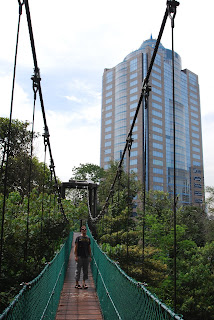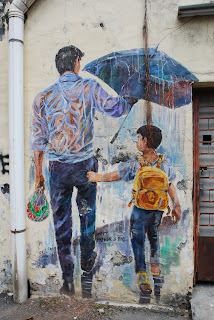December 8, 2017
We went sight seeing in Kuala Lumpur.
We went sight seeing in Kuala Lumpur.
Our first stop after breakfast was the Kuala Lumpur radio tower (1381 ft) to take in the view of the skyline. From here there was a 360 degree view of the city, including the twin 88 floor Patronas Tower (1483 ft). At the top of the K.L. tower they provide several clear boxes with glass floors.
The K.L. tower sits on a site that is relatively green forested hill with open space and even a camping area. We were happy to discover on our path that one of the ways down the hill was a suspended canopy walk.
We walked through Little India, past the old train station, and the large city mosque to the tropical bird aviary.
Kuala Lumpur is a great city for eating and shopping. There are at least 66 large shopping malls. When we first arrived by train in the city and walked through the station to the monorail, we were walking THROUGH a four story mall complete with Christmas trees, carols, and a photo with Santa display.
There are still numerous cheap, tasty, food hawker areas where they are cooking up regional dishes.
Some popular hawkers have gained more credibility by moving into shopping mall food courts, complete with nice furnishings and wait staff.
Ahhhhh...The hum of the city! The backs of many buildings are filled with individual air-conditioning units, resulting in cooler air for some inside, and a loud drone and added heat outside. Ahhh..."economic progress!"
















































